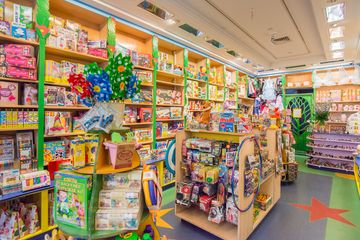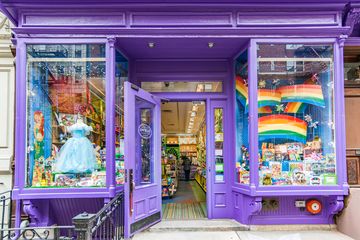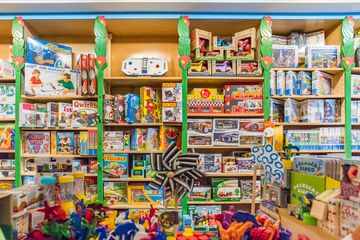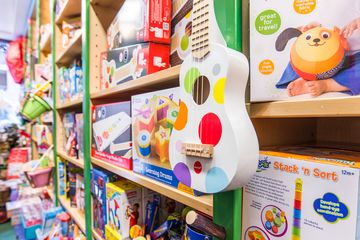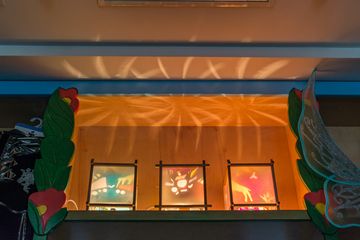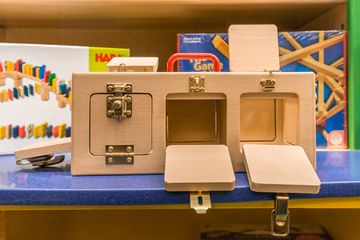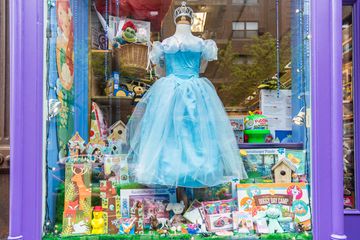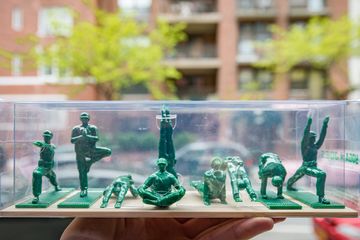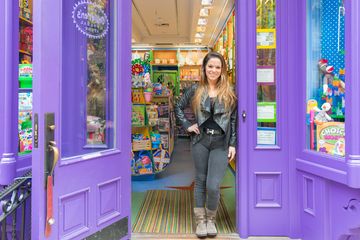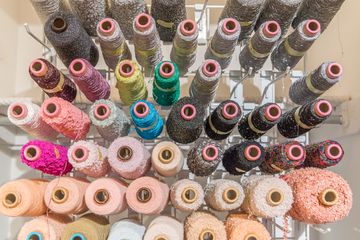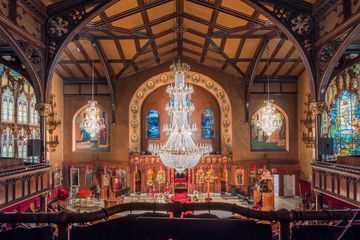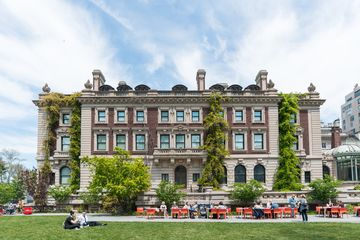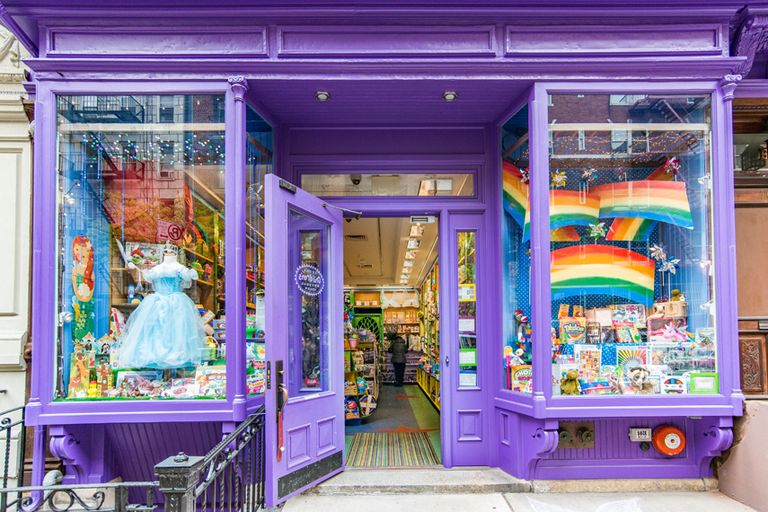
As the former owner of a children's bookstore that also carried educational toys, games and puzzles, I found The Children’s General Store to be everything I could desire in a toy store. I was most impressed by the way in which the store was clearly organized, with different sections for categories like bath play, outdoor play, and dress up. On one wall, there were dozens of Ravensburger puzzles and craft kits for a variety of ages. A rack of animal hand puppets greets customers as they enter and in a central aisle, the “novelty" items, including yellow taxi cabs, slinkies, and other old-school toys, call out for attention. Not only was I entertained, but the young Manhattan Sideways team members were smiling as they took a stroll down memory lane.
Tess Pintchik, the daughter in the mother-daughter team that runs the store, pointed out some of their signature items. One popular one, she noted, was the colorful spinning lamp on a high shelf. She turned off the lights for the full effect, saying, “You won’t find these other places.” She also showed us clever wooden lock boxes that had a different mechanism on each lock. “My mom opened her first store with these,” Tess added proudly, “Usually we hide stuff in it…or the kids do.”
Laura, Tess’s mother, opened the first Children’s General Store on the Upper West Side in 1994. She and her husband were partners in an indoor playground called Play Space. Laura, who has a design background, decided to turn the downstairs waiting area into a store. On the first day, she sold out of almost everything. She credits her success to the fact that she “created an expression of what a child really lives with,” unlike the big warehouse toy stores that populated the city. She called it the “Children’s General Store” because she did not restrict herself to just toys, instead choosing to feature decorations and home goods alongside the playthings. Laura told me that it was the perfect job for a mother with young children, since she could bring her kids into work and have them play in the indoor playground.
A couple years later, Grand Central approached Laura. They were in the middle of their renovation and wanted to fill the terminal with local businesses. Though Laura was hesitant at first to expand, she opened up a store in Grand Central, which began a twelve-year period that Laura describes as “the primetime for the store.” In 2006, she opened the Upper East Side location. Laura designed the 91st Street space by hand, painting the flower details on the shelves and creating the bold star patterns on the ground. “We’re going to give it a facelift, soon, since it’s been ten years,” Tess informed us. Though the other locations had to close, the family held onto their whimsical shop on 91st.
In 2008, Grand Central tried to convince Laura to expand the Children’s General Store. Laura refused – “I didn’t like the lifestyle,” she told me. “Every inch of the store had to be devoted to retail.” Laura wanted to slow down and have time to put more personal attention and creativity into her store, so she decided to focus on what she had. Four months later, the market crashed. Laura then closed the Grand Central store, keeping the Upper East Side Children’s General Store.
“This was my whole childhood,” Tess shared as she picked up the Fizzy Tints, which work as bath bombs for kids. Many of her childhood memories involve toys from the family store. Laughing, she told us that she would use the “Shaving in the Tub” kit with her dad and brother, not realizing that she would not have a beard to shave when she grew up. “I tested everything out on my kids,” Laura said. “They were my little guinea pigs.” “Most people had trouble buying me presents because they thought, ‘this kid has everything,’” Tess admitted. Though, having a treasure trove at her front door does not seem to have spoiled Tess in the slightest – her kind, happy nature makes her the perfect person to run the family business.
Though Tess only officially joined the company in 2015, she appears to be both knowledgeable and enthusiastic about every aspect. “We try our best to find unique things,” she said, lifting up the “Yoga Joes,” GI Joes sitting in peaceful yoga positions. She also showed us the Automoblox, wooden cars that imitate specific rescue vehicles and brands. Though the shop stocks traditional toys such as Mancala, Chinese yoyos, and Jacob’s Ladder, they do not shy away from new, independent company offerings. Overall, however, the Pintchiks try to stock items that encourage adult involvement. As Tess pointed out, “Mom was really active in playing with me and my brother and I think that really shaped how I view ‘play’ and growing up.” Laura clearly enjoys having her daughter working with her. After explaining how Tess convinced her to put out dress-up clothes all-year round, instead of just at Halloween, Laura confided, “She’s made it really exciting for me.”
